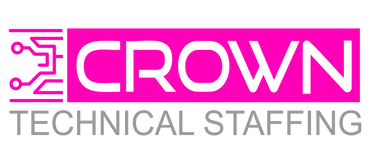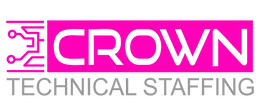It was a crisp Monday morning when Sarah, the HR Director of a leading Medical Device Manufacturer, received a resignation letter from Alex, one of their top engineers. Alex had been with the company for over five years, spearheading critical projects and mentoring junior team members. His departure was unexpected. As Sarah delved into the exit interview, she discovered that a competitor had offered Alex a slightly higher salary and a more comprehensive benefits package. The realization hit hard: the company had lost a valuable asset, not because of a massive salary difference, but because they hadn’t regularly reassessed their compensation structures. The cost of onboarding and training a replacement, not to mention the potential project delays, would far exceed the raise Alex would have needed to stay.
This story underscores a critical oversight many companies make. While it’s easy to get caught up in the day-to-day operations, ensuring competitive compensation and a commitment to employee development is paramount.
Peter Drucker’s classic quote, “Culture eats strategy for breakfast,” reminds us that strategic priorities have no business value without successful execution. To achieve outcomes, an organization needs to invest in its people!
The Great Resignation has made it clear that maintaining employee satisfaction and team health should be a top priority for companies in the coming year. Engineering and HR leaders should aim to get a 360-degree view of how their individual contributors and teams are doing.
Why Is This Important?
Motivated Teams and Employees:
- Communicate better
- Exhibit advanced problem and troubleshooting skills
- Learn faster
- Produce higher quality work
- Contribute to a positive culture within your organization
- Participate in self-improvement and development
- Grow with your organization
How Do We Bring Out The Best In Our Teams?
1. Give autonomy
This isn’t unique to engineers, but it needs to be said: No one wants to be micromanaged. If you wish to retain top employees, you’ll have to foster a work culture that fulfills the need for purpose and personal growth. While trust is earned, managers should be willing to give their engineers the time and space to complete their work. Great engineers usually have a strong sense of autonomy and care deeply about having the freedom to choose how to approach problems. Overbearing managers will only make for resentful engineers.
2. Employee Development is Non-Negotiable
When you stop learning, you stop growing. Many engineers are drawn to the field in the first place because of the endless learning opportunities. Once you’ve mastered one skill, there’s always a new tool, coding language, process, methodology, or technology to sink your teeth into. Support your engineers’ learning journeys by providing an environment where learning is a natural part of the job.
You can break down their career/learning journey into three parts during career mapping sessions:
• Each employee will be required to work on tasks or projects that might not be very exciting but need to be done.
• Each employee will have the opportunity to work on projects that are initially creative and exciting but could become mundane over time.
• Each employee will be exposed to and get the opportunity to work with new technology and projects requiring creative innovation. Moreover, their ideas will be welcome in coming up with these projects.
If you’re able to, you can support your engineers by paying for conferences, courses, workshops, or other educational experiences.
Make It A Game
Gamification is the process of utilizing game thinking and game mechanics to solve problems and engage engineers. This process can be impactful across all your engineering and manufacturing departments, motivating employees and bringing excitement back to your workspace.
- Waste Reduction Challenge: Task engineers with identifying areas of waste in the manufacturing process, from raw material usage to energy consumption, and develop strategies to minimize it.
- Ergonomic Design: Identify a workstation or process that can be ergonomically challenging for workers. Task engineers with redesigning it to reduce strain and improve worker safety.
- Cross-Training Challenge: Have engineers rotate through different departments or roles for a short period to gain a broader understanding of the entire manufacturing process. After rotation, they should present insights and potential improvements they’ve identified. This is a great way to “Upskill and Reskill” your best employees.
Host regular one-on-ones
Weekly or Bi-Weekly One-on-one meetings give managers and their direct reports uninterrupted time to discuss tasks, review performance, eliminate blockers, and work through challenges together. These meetings are also a chance to build rapport. Here is a template that can be used during the 1 on 1’s.

The tale of Alex’s departure underscores a pivotal lesson for Engineering and HR leaders: the true value of an employee extends beyond their current contributions. It encompasses their potential, the knowledge they impart, and the culture they help foster. As we navigate the complexities of the modern workplace, it’s important to find ways to enhance our most significant assets. Investing in their growth, ensuring competitive compensation, and providing an environment that champions creativity and autonomy are not just strategies—they are imperatives. In the end, it’s not just about retaining talent; it’s about nurturing a culture of excellence and innovation.
So How Can We Help You…
When you’re ready to grow and expand your Engineering and Operations Teams, here are 3 ways that we can help:
- We partner with you and your existing talent acquisition teams to help attract and retain Engineers and the frontline leaders that drive productivity.
- Reduce the cost of acquiring and training new hires by supporting and enhancing the efforts of your onboarding team for the first 90 days.
- Provide a no-cost assessment of your current hiring strategies with a 15-minute consultation.


